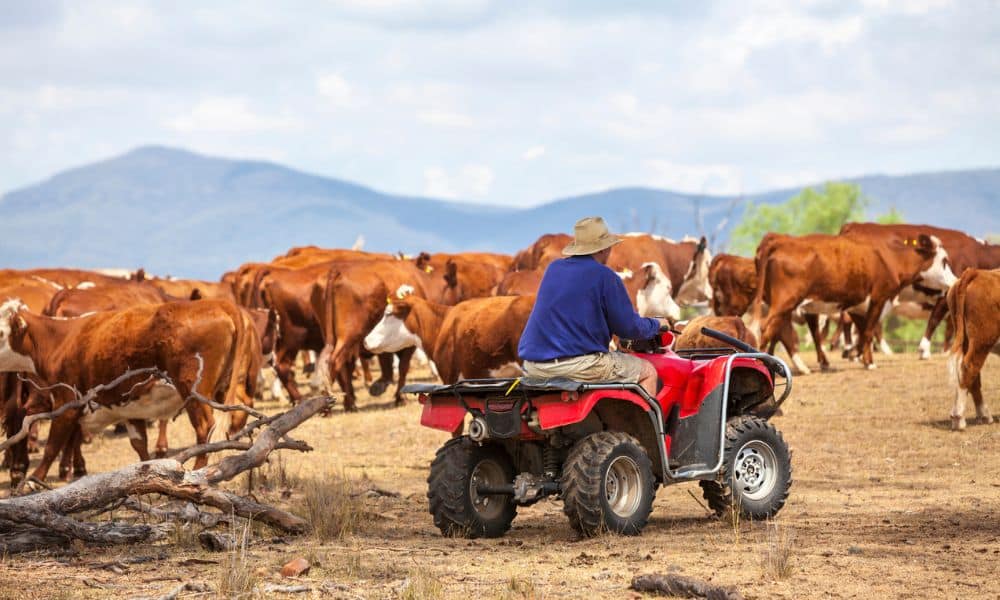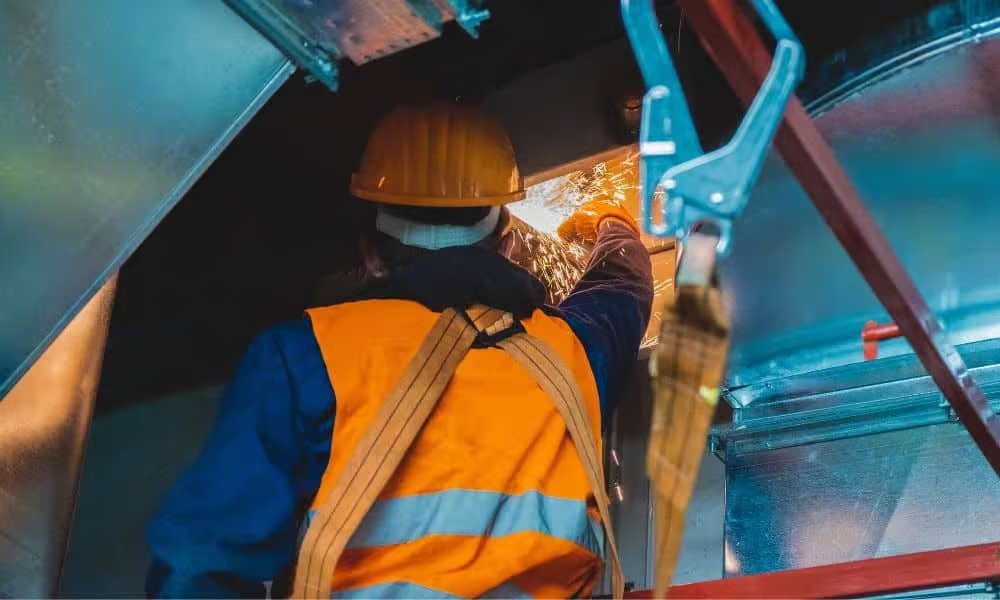Australia is known for its diverse and thriving economy, but with any industry comes risk.
The latest work-related injury fatalities report published by Safe Work Australia showed the nation’s work fatality rate has decreased by 35 per cent in the past 10 years and by more than half since the nation’s peak in 2007. Despite this, the unique challenges and hazards people continue to put themselves through on a daily basis for their income might surprise you.
From construction and mining to emergency services, what are the nation’s most dangerous jobs and why?
Safe Work Australia reported the top five worker fatalities by industries are currently Machinery Operators and Drivers, followed by Labourers, Managers, Technicians and Trades Workers, and Community and Personal Service Workers.
Shockingly, the fatalities of Machinery Operators and Drivers doubled those of Labourers, with the main causes of the fatalities being;
- Involved in a vehicle collision
- Hit by moving objects
- Falling from a height
- Hit by falling objects
- Trapped by moving machinery
Most fatalities in 2021 were of men aged 55 to 64 years old, followed closely by men aged 45 to 54 years old, with the most dangerous industries reporting the highest percentage of fatalities being;
1: Agriculture, Forestry and Fishing

The Agriculture, Forestry and Fishing consistently has some of the highest injury rates due factors such as working with heavy machinery, extreme weather, and working in remote locations with limited medical assistance:
Some jobs with increased risks include:
- Farmers: Farming can be a dangerous job due to the use of heavy machinery, exposure to hazardous chemicals, working with large unpredictable animals, vehicle accidents including tractor accidents and ATV injuries, and the potential for accidents such as falls and being struck by objects.
- Timber harvesting: Timber harvesting can be a hazardous job due to the use of heavy and sharp machinery, the risk of falls from heights, and the potential for injuries from saws and other tools.
- Commercial Fishing: Fishing can be a dangerous job due to the risk of accidents on the water, such as capsizing or falling overboard. Fishers may also be exposed to hazardous chemicals and be required to work long hours in challenging weather conditions.
2: Transport, Postal and Warehousing
Some higher risks jobs within the transport, postal and warehousing industry include:
- Truck drivers: Truck drivers may be at risk of accidents due to the long hours and high mileage they often work, as well as the potential for collisions with other vehicles.
- Delivery drivers: Delivery drivers may be at risk of accidents due to the use of their vehicles, as well as the potential for assaults, dog attacks, trips and falls or back injuries if lifting large heavy items.
- Warehouse workers: Warehouse workers may be at risk of workplace accidents due to the use of heavy machinery and equipment, such as forklifts and pallet jacks. They may also be at risk of falls and injuries from handling heavy boxes and other materials.
3: Mining
While mining has become relatively safer over the years, many risks remain, including:
- Work with heavy machinery
- Work in underground tunnels, which can be hazardous due to the risk of cave-ins, collapses, and other accidents.
- Handle hazardous chemicals
- Work with explosives
- Work in extreme weather conditions
4: Construction
Many construction jobs have higher injury risks due the factors such as heavy machinery, working at heights, use of hazardous materials, tripping hazards and weather exposure. Some specific construction roles with higher risks include:
- Roofers and scaffolders: Work at high elevations and may be exposed to hazards such as falls, electrical shocks, and heat stroke.
- Heavy equipment operators: These workers operate heavy machinery such as bulldozers, excavators, and cranes, which can be dangerous if not used properly. They may also be exposed to hazards such as falls, electrocution, and being struck by heavy objects.
- Electrical workers: Electrical workers may be exposed to electrical shocks and burns, as well as falls and other injuries due to working at heights.
5: Arts and Recreation Services
Physical activities, heavy machinery, extreme weather and uneven ground as just some of the factors impacting art and recreation roles, including:
- Performers: Performers, such as actors, dancers, and musicians, may be at risk of accidents due to the physical demands of their work, as well as the potential for injuries from stage effects or props.
- Coaches and instructors: Coaches and instructors may be at risk of accidents due to the physical nature of their work, as well as the potential for injuries from sporting equipment or accidents while participating in activities.
- Theme park and fairground workers: Theme park workers may be at risk of accidents due to the operation of rides and other attractions, as well as the potential for falls and other injuries on the job.
- Zoo workers: Zoo workers may be at risk of accidents due to the handling of potentially dangerous animals, as well as the potential for falls and other injuries on the job.
6: Electricity, Gas, Water and Waste Services
It's easy to take power, gas, clean running water and rubbish disposal for granted when everything is going well, but jobs in this industry of essential services can involve some serious risks from electrocution, falls and burns to hazardous materials. Some of the jobs with high risks include:
- Electricity network installers and repairers: We all want our power back on ASAP after a storm and it's these workers who work day and night, often in severe weather to repair high voltage power lines. Electricians may be at risk of electrical shocks and burns, as well as falls and other injuries due to working at heights.
- Gas workers: Gas workers may be at risk of explosions and fires, as well as exposure to hazardous chemicals.
- Water and wastewater treatment plant workers: These workers may be at risk of accidents due to the use of heavy machinery and equipment, the potential for falls and risk of exposure to dangerous chemicals and untreated sewage.
- Waste collection workers: Waste collection workers may be at risk of accidents due to the use of heavy machinery, such as garbage trucks, as well as the potential for falls and other injuries on the job.
7: Manufacturing

Heavy machinery, moving parts, chemicals and added risks such as forklifts can make manufacturing roles high risk for injuries. Some roles with high risks include:
- Machine operators: Machine operators may be at risk of accidents due to the operation of heavy machinery, as well as the potential for injuries from moving parts or hazardous substances.
- Welders: Welders may be at risk of burns and electrical shocks, as well as exposure to hazardous substances and fumes.
- Assemblers: Assemblers may be at risk of accidents due to the use of heavy machinery and equipment, as well as the potential for falls and other injuries on the job.
- Chemical plant workers: Chemical plant workers may be at risk of accidents due to the handling of hazardous substances, as well as the potential for explosions and fires.
Common risks across industries and jobs
The main elements of risk – uniform across most industries – seem to be working with heavy machinery, which can be dangerous if not used properly; working in extreme weather conditions, which can lead to heat stroke, hypothermia, or other health issues; and working in areas which leave them prone to slips, trips, and falls.
Other reasons why these industries may be reporting more fatalities than others could include;
- Lack of protective equipment or safety measures
In some cases, workers may not have access to protective equipment or safety measures that could help reduce the risk of harm while working. This could be due to cost constraints or a lack of regulations requiring the use of such equipment.
- Limited training or supervision
Workers who are not adequately trained or supervised may be more susceptible to being involved in a fatal accident. This could be due to a lack of understanding of proper safety procedures or a lack of guidance on how to perform tasks safely.
Beyond fatalities, workers’ compensation claims have mostly been made by workers aged 60 to 64 years old, with the least amount of claims made by workers aged 35 to 39 years old.
The most frequent workers’ compensation claims have been due to;
- Body stressing
- Falls, trips, and slips of a person
- Being hit by moving objects
- Mental stress
- Hitting objects with a part of the body
- Vehicle incidents and other
- Heat, electricity, and other environmental factors
- Chemicals and other substances
The nature of these claims has been dominated mostly by injury at 71 per cent, with disease sitting at 29 per cent. Of these;
- 40 per cent were traumatic joint, ligament and muscle, or tendon injury
- 16 per cent were musculoskeletal and connective tissue diseases
- 15 per cent were wounds, lacerations, amputations, and internal organ damage
- 11 per cent were fractures
- 9 per cent were mental health conditions
WorkCover Queensland’s latest annual report stated there have been rising legal claims costs across all workers’ compensation areas in Australia.
It also stated, “longer statutory claim durations and more mental injury claims are placing pressure on (the company’s) financial position.”
Supporting the higher percentage of mental health claims further, the report read:
“There are several factors contributing to this growth in statutory claims costs including growth in the rate of mental injury claims. In 2021–2022, 1,974 primary mental injury claims were accepted. This is a 14.5% increase from 2020– 2021 and continues the rising trend in the number of mental injury claims… We anticipate the upward trend will continue into the next financial year.”
